
How to Use MQ5 Gas Sensor: Examples, Pinouts, and Specs
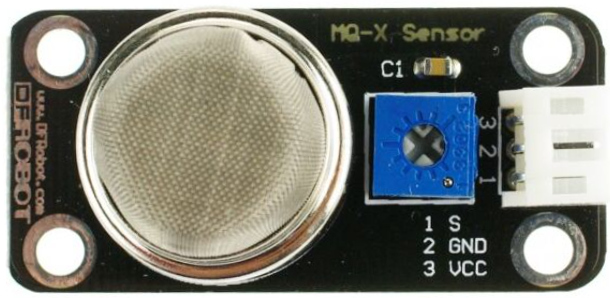
 Design with MQ5 Gas Sensor in Cirkit Designer
Design with MQ5 Gas Sensor in Cirkit DesignerIntroduction
The MQ5 Gas Sensor, manufactured by DFRobot (Part ID: SEN0130), is a versatile and reliable gas detection sensor designed to detect various gases, including natural gas, LPG (liquefied petroleum gas), and smoke. It operates on the principle of resistive change in the presence of gas, providing an analog output proportional to the gas concentration in the environment. This sensor is widely used in safety systems, gas leak detection, and environmental monitoring applications.
Explore Projects Built with MQ5 Gas Sensor
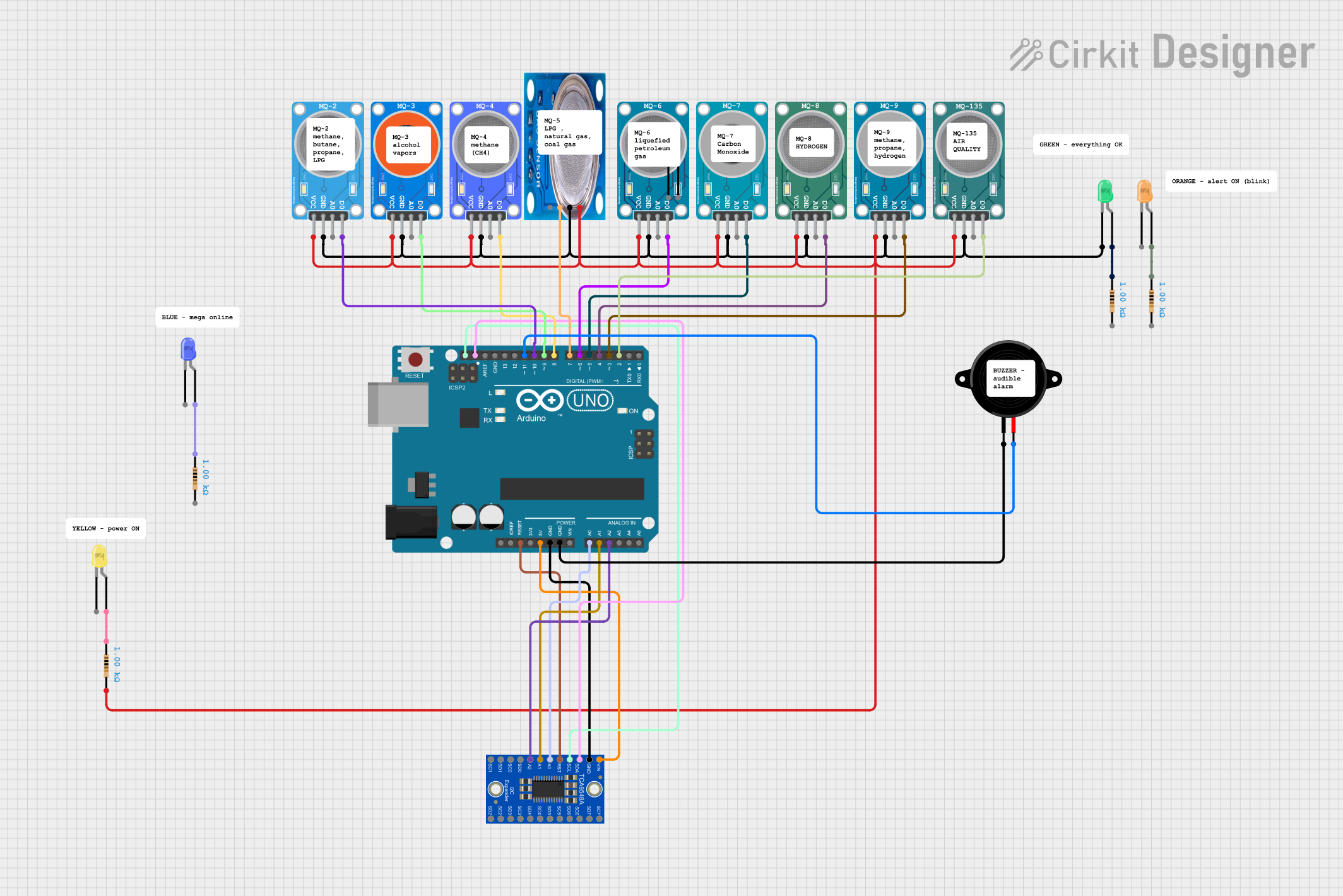
 Open Project in Cirkit Designer
Open Project in Cirkit Designer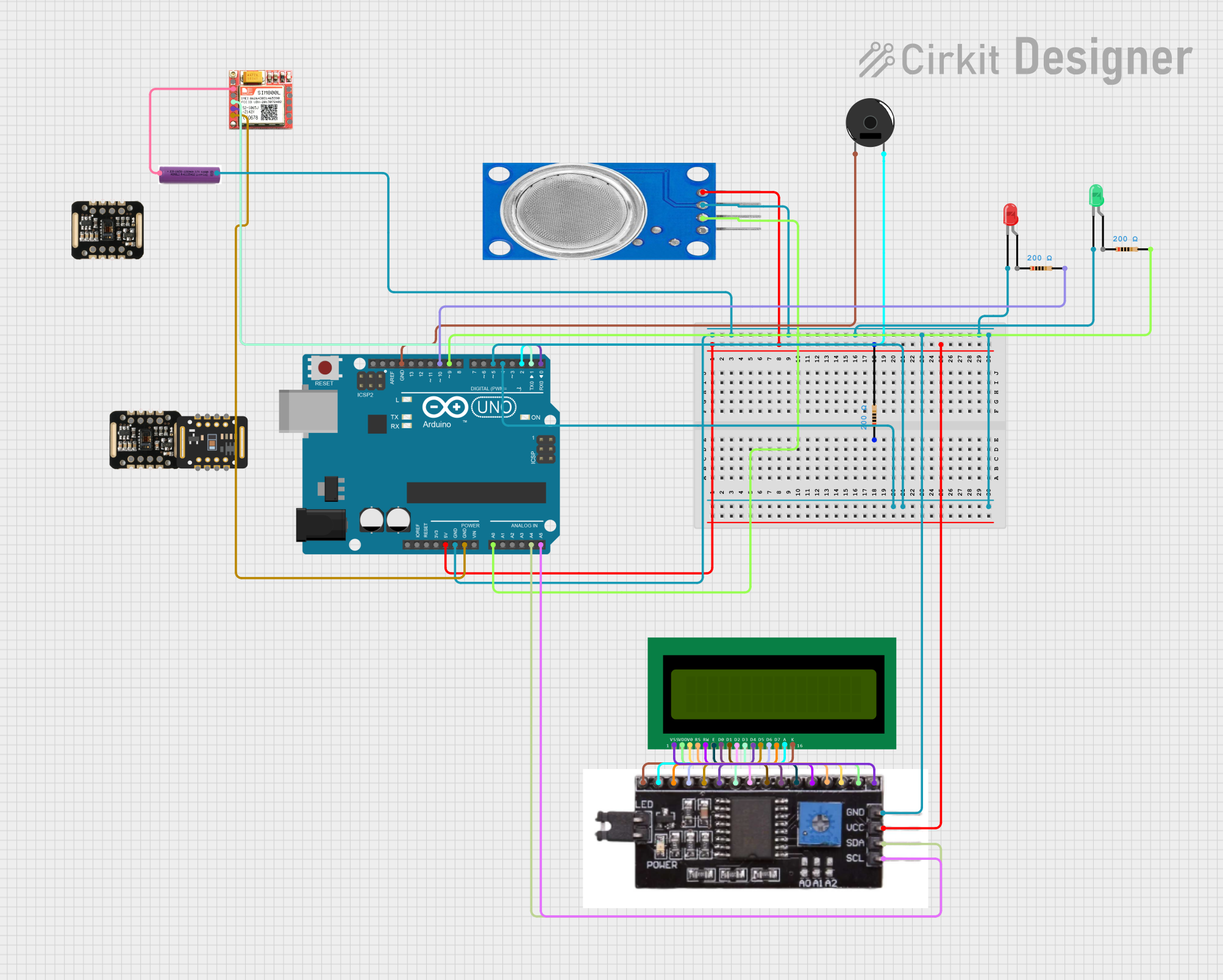
 Open Project in Cirkit Designer
Open Project in Cirkit Designer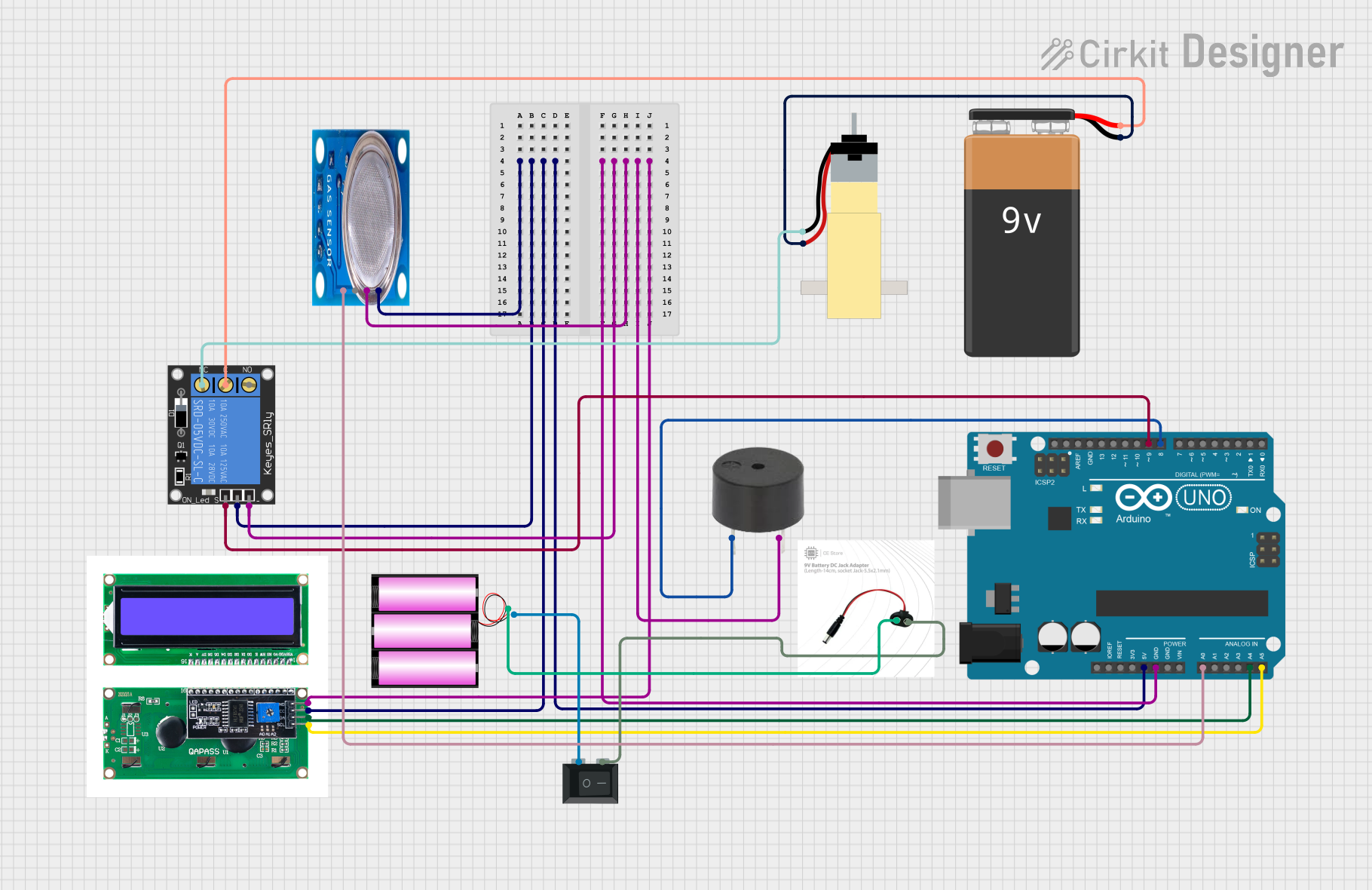
 Open Project in Cirkit Designer
Open Project in Cirkit Designer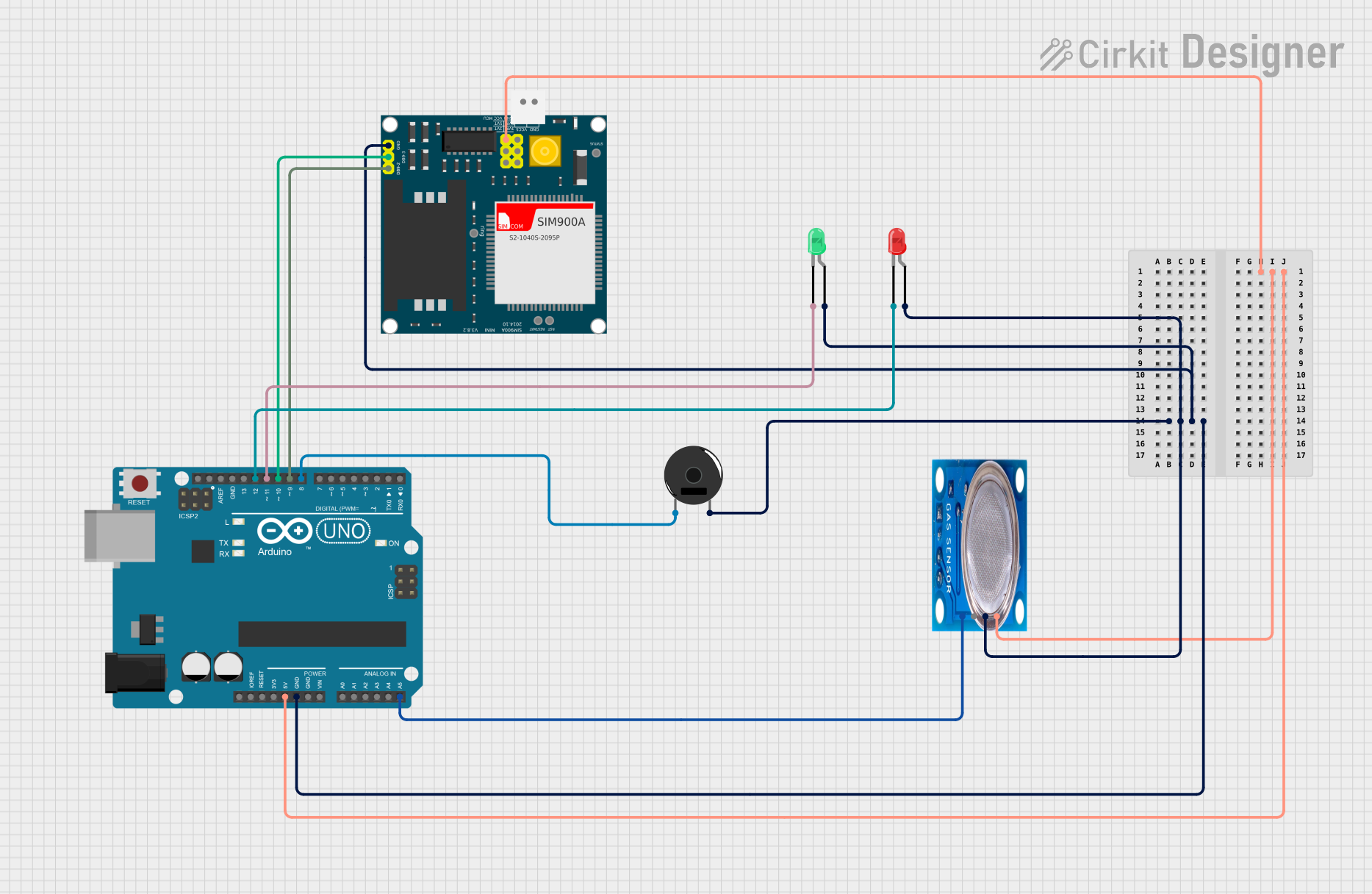
 Open Project in Cirkit Designer
Open Project in Cirkit DesignerExplore Projects Built with MQ5 Gas Sensor

 Open Project in Cirkit Designer
Open Project in Cirkit Designer
 Open Project in Cirkit Designer
Open Project in Cirkit Designer
 Open Project in Cirkit Designer
Open Project in Cirkit Designer
 Open Project in Cirkit Designer
Open Project in Cirkit DesignerCommon Applications and Use Cases
- Gas leak detection in homes and industries
- Smoke detection in fire alarm systems
- Environmental monitoring for air quality
- IoT-based gas monitoring systems
- Safety systems in kitchens and laboratories
Technical Specifications
The MQ5 Gas Sensor is designed for ease of use and integration into various systems. Below are its key technical details:
Key Technical Details
| Parameter | Value |
|---|---|
| Operating Voltage | 5V DC |
| Power Consumption | ≤ 800 mW |
| Detection Range | 200 - 10,000 ppm (LPG, CH4) |
| Preheat Time | ≥ 24 hours (for stable output) |
| Output Signal | Analog (0-5V) |
| Sensitivity Adjustment | Potentiometer on the module |
| Operating Temperature | -10°C to 50°C |
| Dimensions | 32mm x 22mm x 27mm |
Pin Configuration and Descriptions
The MQ5 Gas Sensor module has a 4-pin interface for easy connection to microcontrollers or other circuits. Below is the pin configuration:
| Pin Name | Description |
|---|---|
| VCC | Power supply pin (5V DC) |
| GND | Ground pin |
| AOUT | Analog output pin (proportional to gas level) |
| DOUT | Digital output pin (triggered by threshold) |
Usage Instructions
The MQ5 Gas Sensor is simple to use and can be integrated into a variety of circuits. Follow the steps below to use the sensor effectively:
How to Use the Component in a Circuit
- Power the Sensor: Connect the
VCCpin to a 5V power source and theGNDpin to ground. - Read the Output:
- Use the
AOUTpin to read the analog signal, which varies with gas concentration. - Alternatively, use the
DOUTpin for a digital signal. The threshold for the digital output can be adjusted using the onboard potentiometer.
- Use the
- Connect to a Microcontroller: For example, connect the sensor to an Arduino UNO as follows:
VCCto Arduino5VGNDto ArduinoGNDAOUTto an analog input pin (e.g.,A0)- Optionally, connect
DOUTto a digital input pin for threshold-based detection.
Important Considerations and Best Practices
- Preheat Time: Allow the sensor to preheat for at least 24 hours before taking stable readings.
- Ventilation: Ensure proper ventilation around the sensor for accurate gas detection.
- Calibration: Calibrate the sensor in a known gas concentration environment for precise measurements.
- Avoid Contamination: Keep the sensor away from water, oil, and other contaminants that may affect its performance.
- Power Supply: Use a stable 5V power source to avoid fluctuations in readings.
Example Code for Arduino UNO
Below is an example code snippet to read the analog output of the MQ5 Gas Sensor using an Arduino UNO:
// MQ5 Gas Sensor Example Code
// Manufacturer: DFRobot
// Part ID: SEN0130
const int analogPin = A0; // Connect AOUT pin of MQ5 to A0 on Arduino
int sensorValue = 0; // Variable to store the sensor reading
void setup() {
Serial.begin(9600); // Initialize serial communication at 9600 baud
Serial.println("MQ5 Gas Sensor Test");
}
void loop() {
sensorValue = analogRead(analogPin); // Read the analog value from the sensor
Serial.print("Gas Concentration (Analog Value): ");
Serial.println(sensorValue); // Print the sensor value to the Serial Monitor
delay(1000); // Wait for 1 second before the next reading
}
Troubleshooting and FAQs
Common Issues and Solutions
No Output or Incorrect Readings:
- Cause: Insufficient preheat time.
- Solution: Allow the sensor to preheat for at least 24 hours before use.
Fluctuating Readings:
- Cause: Unstable power supply or environmental interference.
- Solution: Use a regulated 5V power source and ensure the sensor is placed in a stable environment.
Digital Output Not Triggering:
- Cause: Incorrect threshold setting.
- Solution: Adjust the potentiometer on the module to set the desired threshold.
Sensor Not Responding to Gas:
- Cause: Sensor contamination or damage.
- Solution: Ensure the sensor is clean and free from contaminants. Replace if necessary.
FAQs
Q1: Can the MQ5 detect gases other than LPG and natural gas?
A1: Yes, the MQ5 can detect other gases, such as smoke and hydrogen, but it is most sensitive to LPG and natural gas.
Q2: How do I calibrate the sensor?
A2: To calibrate the sensor, expose it to a known concentration of gas and adjust the potentiometer until the desired output is achieved.
Q3: Can I use the MQ5 with a 3.3V microcontroller?
A3: The MQ5 requires a 5V power supply for proper operation. Use a level shifter or voltage regulator if interfacing with a 3.3V microcontroller.
Q4: How long does the sensor last?
A4: The MQ5 has a typical lifespan of 2-3 years under normal operating conditions.